Glacial hints: A brief guide to sluffs and roller balls
- Published
Visitors to Scotland's mountains this winter are encountering sluffs, rime ice and roller balls. But what are they?
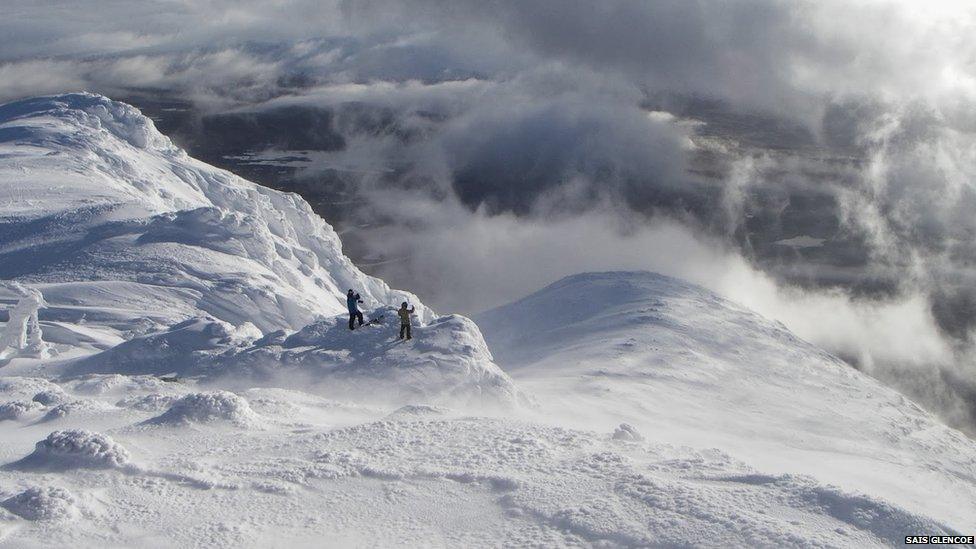
Heavy snowfalls, freezing temperatures and powerful winds have created spectacular, and some potentially dangerous, conditions on Scottish hills and mountains.

Cornices, edges of snow overhanging high crags, are a common feature - and risk - of most winters. However, this season's frequent strong winds coupled with big dumps of snow have seen some larger than usual cornices in ranges such as the Northern Cairngorms.
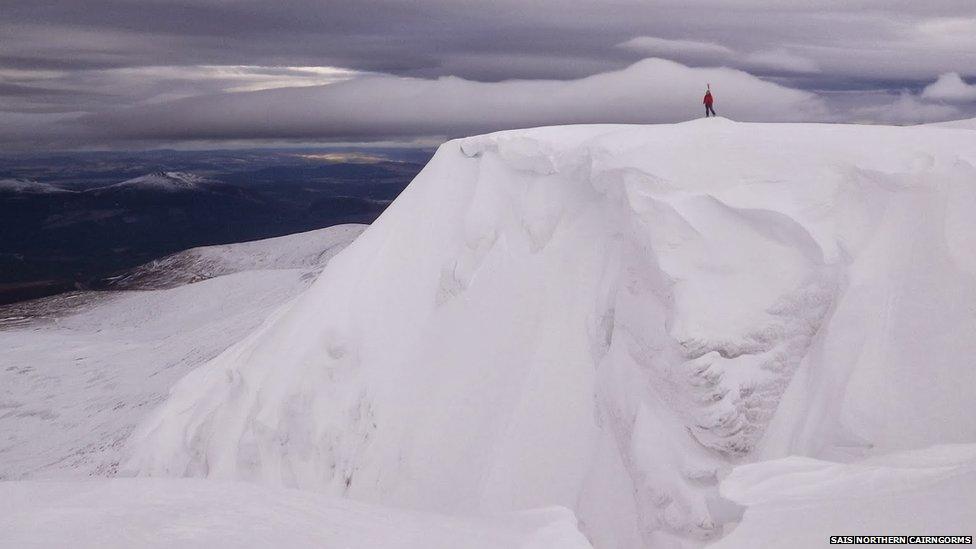
Cornices above the Vent at the summit of Coire an Lochain in the Northern Cairngorms. The overhangs can be mistaken as solid ground. In January, several groups of climbers have fallen through cornices. The lumps of snow that came down with the climbers caused avalanches. Most of the people caught up in these incidents escaped injury because they landed in deep, soft snow.

Rime ice, external, is rough, white ice which forms when super-cooled vapour freezes on contact with a solid object. Mark Diggins, of the Sportscotland Avalanche Information Service (SAIS), said: "Riming is fairly common but we have unusually striking features with rime ice at the moment because of the constant direction of the wind from the south east."

A walker in the Northern Cairngorms with fingers of rime ice in the foreground.
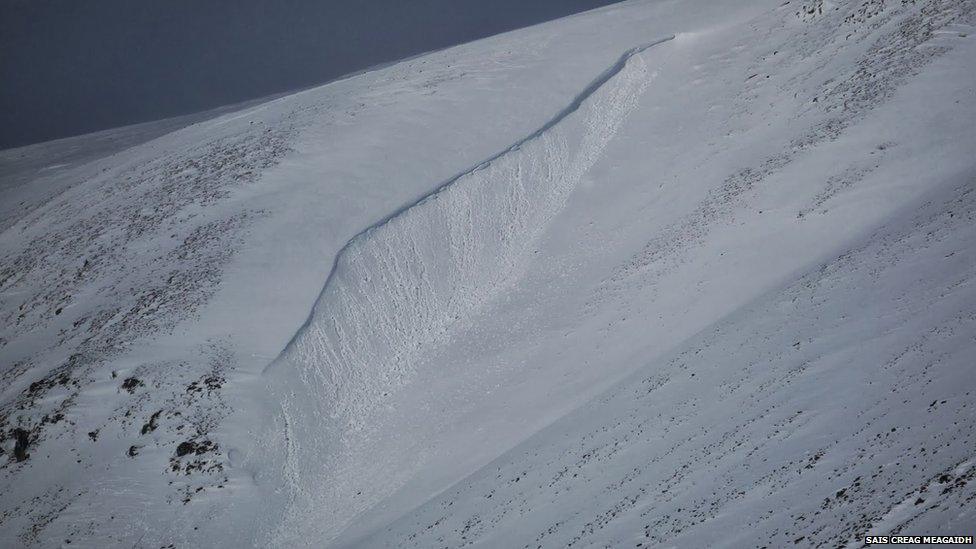
Roller balls, also known as snow balls, on a slope of Balloon Gully near the Carn Liath plateau in the area of the Munro, Creag Meagaidh. Roller balls are a sign of a wet, unstable snow pack.
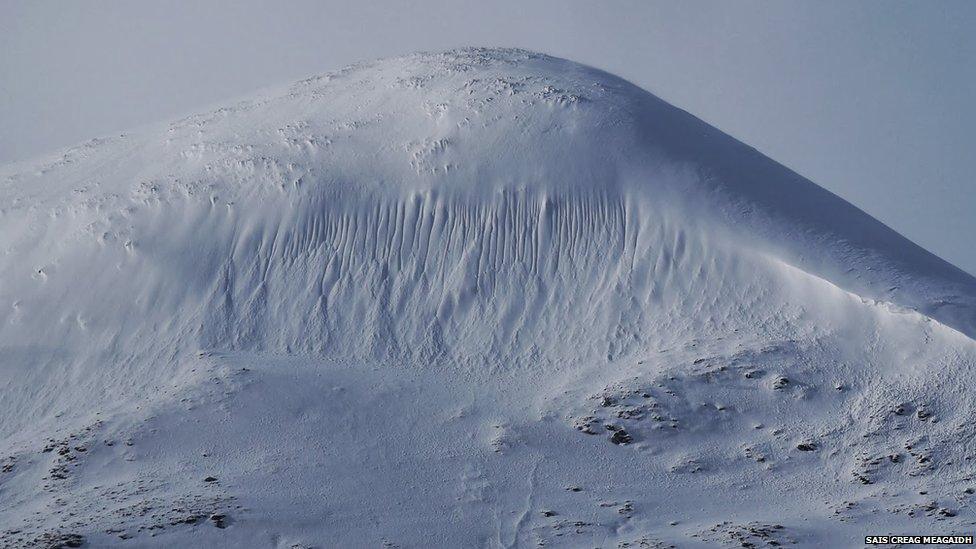
Sluffing on a subsidiary summit of Sron a Ghoire, also in the area of Creag Meagaidh. Sluffs are small cascades of loose, dry snow, and are another indicator of an unstable snow pack.
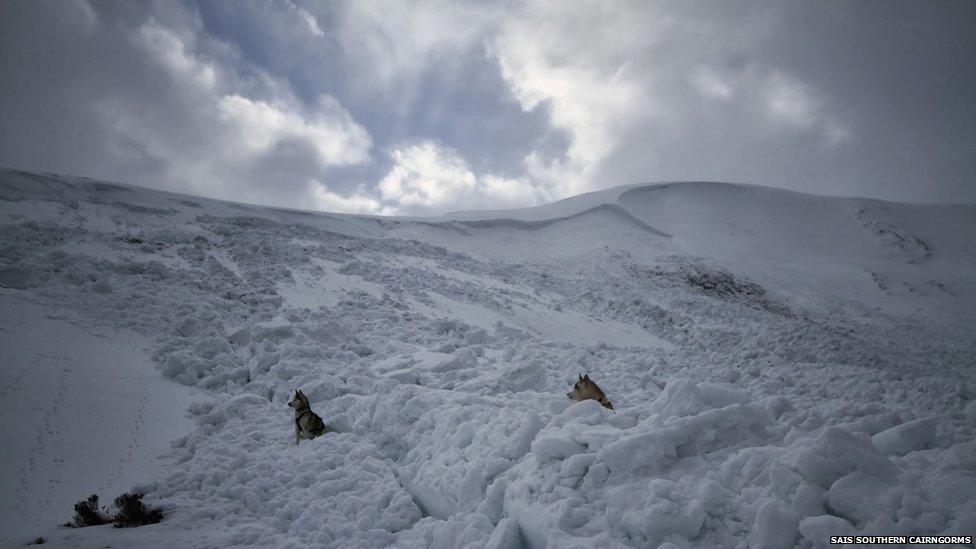
Roller balls and sluffs can be a warning of one of the greatest threats in the hills - avalanches. An SAIS avalanche risk forecaster used dogs to help show the scale of blocks of avalanche debris in the Southern Cairngorms.
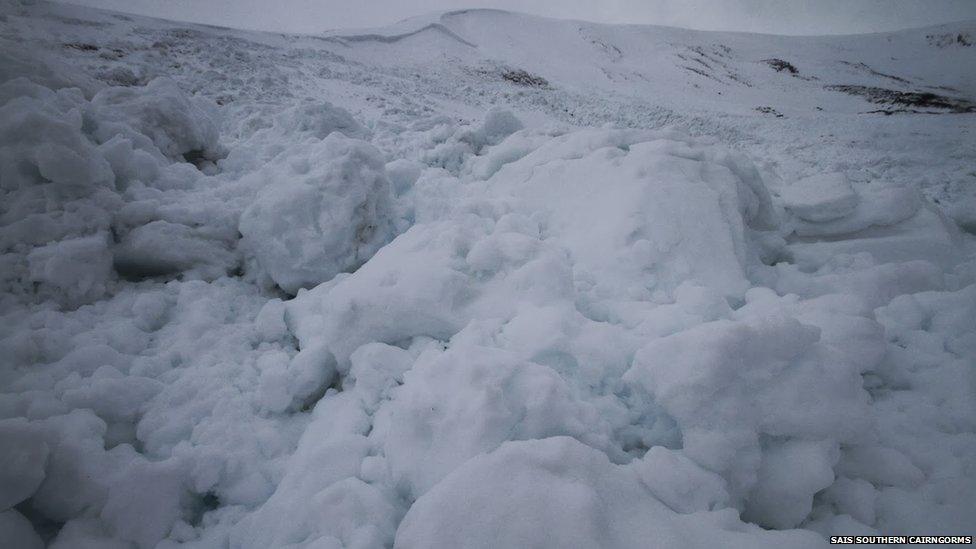
SAIS has recorded 78 avalanches in Scotland's mountains in the past month, and 152 since its latest forecasting season began in December.
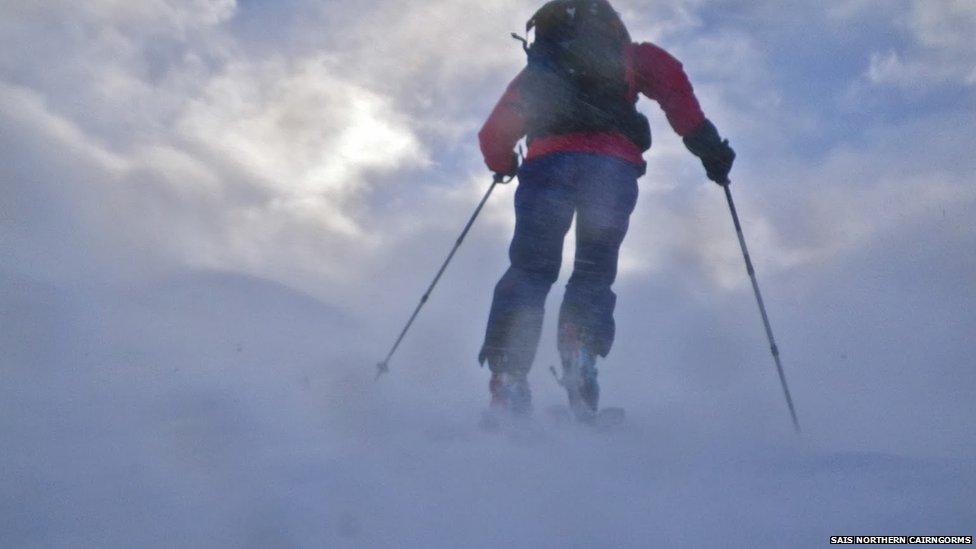
Mr Diggins said bad weather has been a big challenge to SAIS teams this winter.
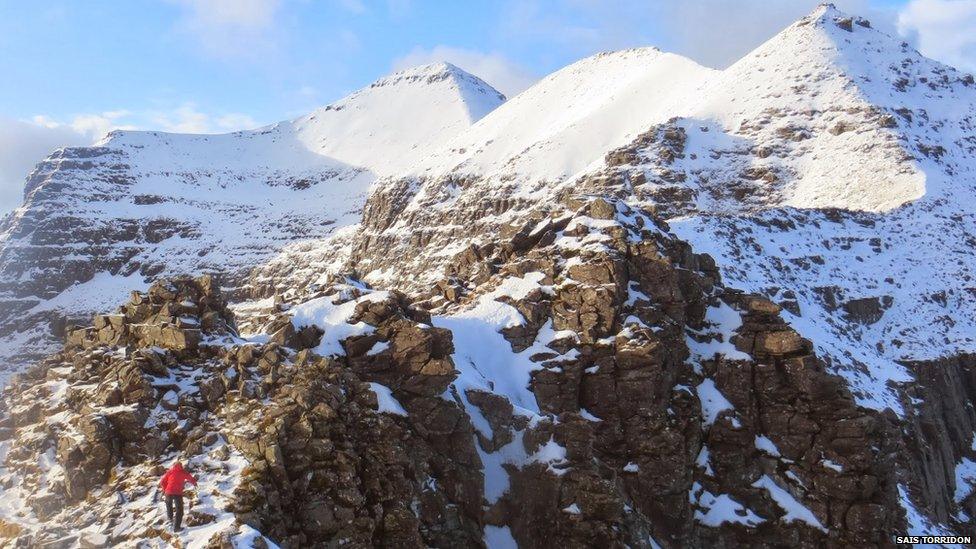
He said: "Weather conditions at the moment are pretty tiring for the SAIS avalanche forecasters with storm force winds and blizzards interspersed with short periods of calmer conditions, before another cycle of storms and bad weather arrives making conditions quite arduous. During these storm cycles is when the avalanche hazard can be high, which has been a frequent situation this winter."
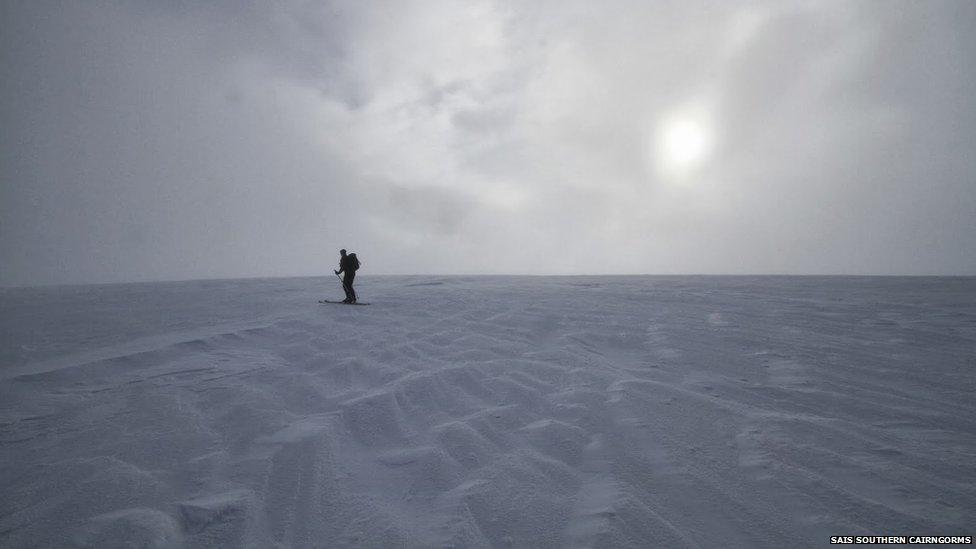
The SAIS co-ordinator added: "Above 600m altitude in all areas of the Scottish Highlands there is a tremendous amount of snow at the moment."